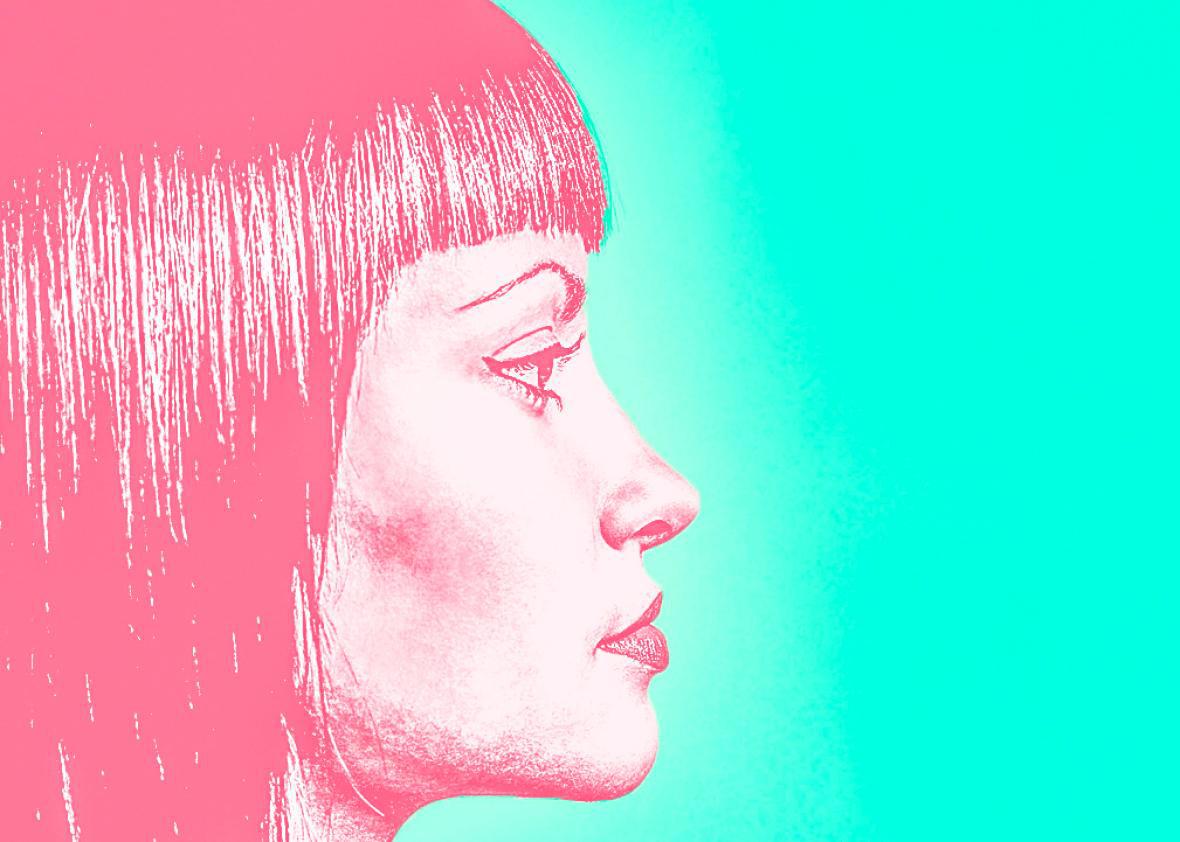“Do not get bangs,” Jezebel’s Jasmine Guillory writes in a piece that rocked Slate’s New York and Washington offices to their foundations when someone happened to drop it in one of our Slack channels. “They won’t look good on you, they’ll drive you crazy, they look good on virtually no one, don’t do it.”
Guillory’s jeremiad against bangs—that they require too much effort; that they cause forehead acne; that they de-emphasize your nose at the expense of your eyes; that on the continuum of hairstyle-based regret and childish regression, they presumably rank somewhere near the mullets-and-fauxhawks section—inspired hosannas, rebukes, soul-searching, and a whole lot of digging-up of old childhood pictures. Outpourings of memories! Bowls came up a lot, and also perspiration, as well as existential anxieties about the relationship between being and time. What bangs do, it’s clear from the vignettes below, is stir a longing in us to be children again—yet bangs also whisper to us that we can never go back.
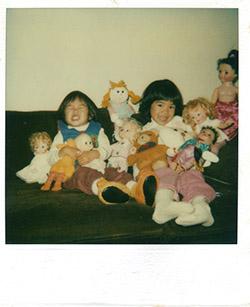
Courtesy Lisa Macabasco
Lisa Wong Macabasco, assistant social media editor: Bangs are de rigueur among Asian kids, because all Asian parents find out at the annual Asian Parent Conference that you can just put a bowl on your kids’ heads and cut around it. So of course, my sister and I are both rocking the Asian Bowl in this picture.
As an adult, I became a huge fan of bangs again when I realized to my horror that I had what Tyra Banks calls a “five-head.” Bangs were a way to make my five-head look normal, concealing the massive dome above my eyebrows. I eventually abandoned them when I move to New York because sweaty bangs are never a good look, and there’s just not enough time to do the required upkeep. Two tips for those who do have bangs, though: First, dry shampoo SAVES LIVES. Second, the drunken urge to self-trim—don’t fight it! It often gives you the necessary confidence to snip.

Courtesy Heather Schwedel
Heather Schwedel, copy editor: I’m still not over growing out my bangs in third grade. “Never again!” concluded third-grade me. (I think this picture is from first grade.) My rational adult self knows that what felt like forever to an 8-year-old would go by quickly now, but I still shudder at my memories of months hiding my growing-out bangs under stretchy cloth headbands that matched the stretchy kids’ pants I wore at the time. I actually do think that bangs look cute on some people. But deciding to get bangs means also deciding at some later date to grow them out, and maybe it also means acknowledging that everything changes and nothing is permanent, which destabilizes my carefully calibrated self-conception too much to consider it.
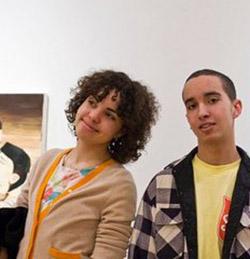
Courtesy Lisa Larson-Walker
Lisa Larson-Walker, associate art director: Curly bangs are impossible, or at least mine were, or whatever it was occurring on my forehead when I was in college and cutting my own hair whenever bored yielded “bangs,” much like how a bowl cut yields “bangs.” This photo with my brother captures a moment when I was finally committed to letting my hair grow out, following an intervention some weeks before: Much to my chagrin, my mom offered to pay for a haircut at the Hair Cuttery to try to make right what I had done to myself. I distinctly remember what the stylist told me: “When you’re bored, honey, please just paint a painting—don’t touch your hair.”

Courtesy Rachel Gross
Rachel E. Gross, editorial assistant: In adulthood, I have often attempted to resurrect my childhood bangs, which to me represent the carefree ease of simpler times. Yet repeated episodes of tears and frantic beanie-wearing have convinced me that the moment has passed. All I have now to comfort myself is this photo evidence that I once pulled off jagged bangs with aplomb—credit to my mom, who trimmed them literally using a bowl. Such is the price of maturity. I guess you have to be under 3 to pull this one off, ladies.
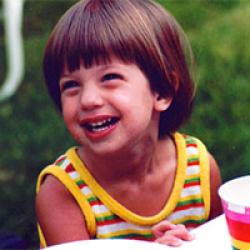
Courtesy Allison Benedikt
Allison Benedikt, news director: This was when I was still cute, before my mom convinced me to cut my hair “boy short” and wear blue glasses. It’s a fabulous bowl cut, and I wish I had that tank top on right now. As an adult, I’ve gotten bangs every few years, whenever I am feeling gross and ugly and old and want a new look. Results have been mixed. Very pregnant with my second child and sporting that unusually thick head of hair you get when a baby’s in there, I chopped off everything I had worked so hard to grow out and ended up resembling an Orthodox Jew in a wig. One time in Chicago I got these really short, super-spiky bangs that looked ridiculous, especially with my cowlick situation, and I was always wetting them and then pressing on them to try to get them to stay down. I’m pretty sure that on me, bangs are cutest when my hair is pulled back, and not as cute when my hair is not pulled back.
My husband hates bangs and begs me not to get them whenever I am considering. Which usually just persuades me to do it. I will probably be either on the verge of getting bangs or in the process of growing out my bangs for the rest of my life.
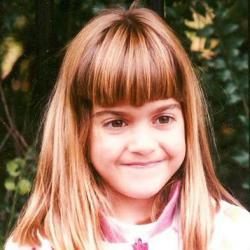
Courtesy Christina Cauterucci
Christina Cauterucci, staff writer: As a kid, I had incredibly thick, heavy bangs that lay on my forehead like a woolen blanket. They were both cute and childish. In fourth grade, owing to a family relocation across state lines and a newfound desire to look like a grown-up, I grew them out, a process that involved hundreds of bobby pins and produced an entire family photo album I’m loath to crack open.
Thing is, my hair is too thick for anything but bangs. No matter how I part it, my hair falls in my face; the best I can do is let it and cut the front parts short enough that they don’t cover my eyes. Voilà—bangs! I had a difficult time finding a contemporary photo of myself with nonsweaty-looking bangs, which might say as much about my extracurricular habits and gland activity as it does about the nature of bangs: They hold sweat, one reason why beauty and health writers have formed a bang-truther conspiracy that pegs forehead acne on bangs. I don’t care. I love my grown-up bangs, which are more asymmetrical and thinned-out than my kiddo ones, but I’m considering bringing back the old super-thick, straight-down bangs to reclaim for adulthood the look I once hated.

Courtesy Alex Coakley
Alexandra Coakley, excerpts assistant: Here I am, channeling Jane Birkin or Francoise Hardy, owning that tea-length summer dress like a mini–Alexa Chung. I also experimented with “side bangs” in high school à la Mean Girls Lindsay Lohan. I grew out my bangs in college—not because they didn’t make me look like a modern muse, but only because they’re a real pain to blow-dry every day.
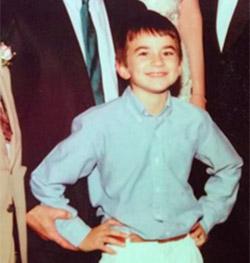
Courtesy Jacob Brogan
Jacob Brogan, contributor: I’m not sure if my hair here counts as bangs, but I’m struck by my pose. Did my haircut, however simple, inform my stance? Was I forced to interrogate my best angles in the absence of an angular haircut? I find it hard to imagine myself with bangs today, but this photograph makes me wonder if I should think again. Would they help me regain the lost power of my youth?

Courtesy Greta Weber
Greta Weber, intern: The earliest memory I have of my bangs was the painful process of growing them out. I was in fourth grade, and I’d realized that bangs were no longer cool. So I parted them down the middle, clipping each side with colored barrettes, and waited out the awkward in-between phase. I had only one front tooth at that point, which didn’t help my look. My mom called it “a coming-of-age ritual”— integral to puberty, maybe.
When I texted my mom to ask why she gave my sisters and me bangs in the first place, she replied, “It was a simple solution to keeping your hair out of your eyes. Utilitarian, I guess.” So for kids, bangs equals practicality. I’ve never seriously considered getting bangs as an adult. One time, I asked my friend if I could pull off the hipster bang—the super-short, straight-across variety—but she was like, “Eh.” So I passed. But for women who can pull off the bang these days: Ya look good.
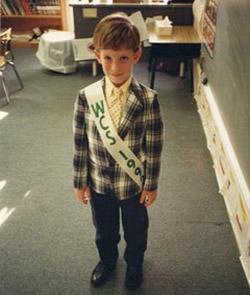
Courtesy Bryan Lowder
J. Bryan Lowder, associate editor: I had bangs for most of my childhood, in the semi-bowl-cut fashion. I think I pulled them off rather well. Then my hair turned curly like my dad’s, and all subsequent hairstyles have been swept up off my forehead. Do I miss bangs? Perhaps. But I do think they don’t really work on grown men. On women, however, they can be quite striking and sassy, especially when approached with commitment—the very intentional, hard-cut bang. You get into trouble with the half-hearted combover–slash–loose tresses thing.
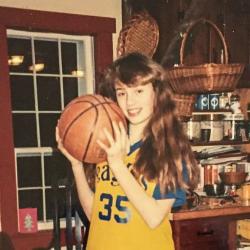
Courtesy Rebecca Onion
Rebecca Onion, history writer: I went to middle school in New Hampshire, and the prettiest, most popular girls had that weird hair thing where you make a big, upswelling bump on top of your head and secure it with barrettes, and then there are bangs below it. This hairstyle required hairspray, which I was too scared and inept to use, but I did try to do the bangs. My hair had gotten curly during puberty, but I had not yet come to terms with that. There were three aftereffects of my delusion: 1) I still used shampoo, 2) I brushed my hair every morning, and 3) I thought I could do bangs. I could not. I let go of the bangs confusion pretty early in high school. It took me until college to give up shampoo and the hairbrush.

Courtesy Rachael Larimore
Rachael Larimore, senior editor: Oh, the 1980s. Has there ever been a worse time for hair? Years later, after I’d grown my bangs out, I would look back on my high-school hair and cringe, and blame it on the fact I grew up in a small Rust Belt town far, far away from any fashion capital. But then I went back and watched The Breakfast Club and Sixteen Candles (thank you Molly Ringwald) and realized that poofy bangs were indeed a societal phenomenon, however baffling. I still remember the process of curling the top layer of bangs back, the lower level of bangs forward, and then teasing the whole thing into a frizzy poof. After a while, I took pride in setting down the curling iron and just teasing my bangs into a swooping wave across my forehead—but they were still poofy. And I still went through gallons of hair spray. My bangs got smaller and smaller when I went to college, and then I grew them out completely. I’ve never been tempted, really, to go back. How could I? Those bangs were awful and ridiculous, but at the same time, it would be impossible to top them.
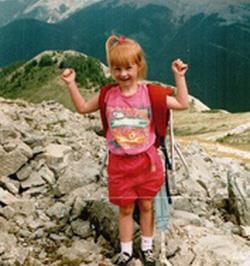
Courtesy Amanda Hess
Amanda Hess, staff writer: I have never not had bangs. I would look for a photo of myself without bangs but I wouldn’t give it to you—I would burn it. BANGS FOREVER.
